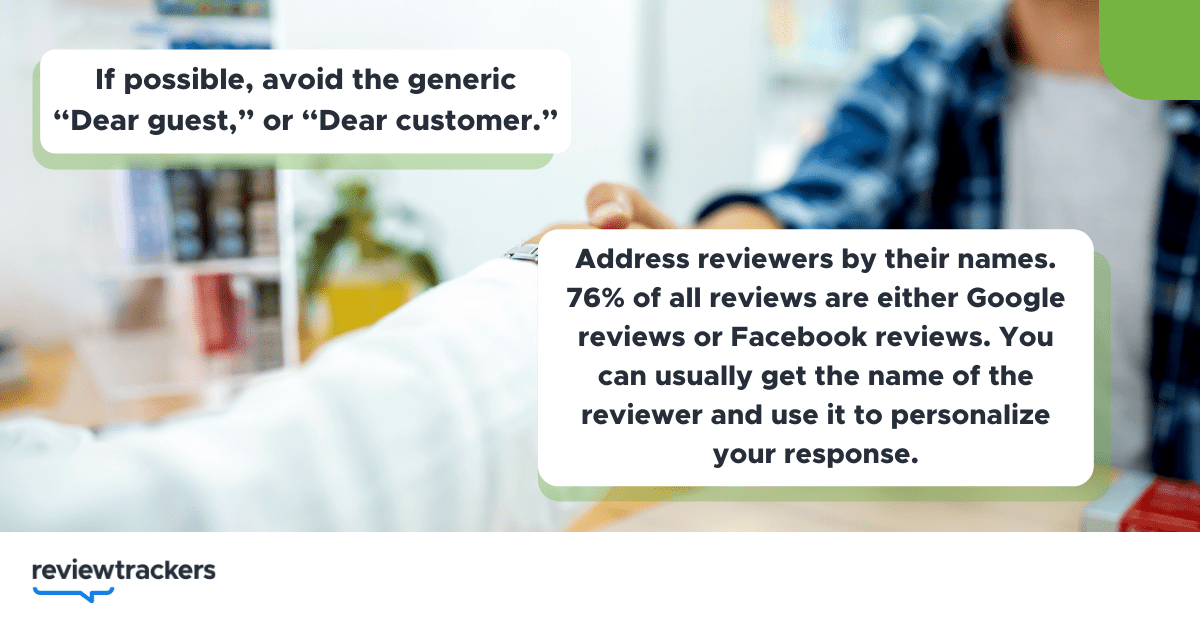Mastering the skill of turning a negative review into a positive review is vital to the long-term success of your brand, and it involves learning the art of knowing how to respond to negative reviews.
While it isn’t possible with every interaction, the ability to turn a negative review into positive feedback is a skill that any company needs. With it, they can shift the tide of negative perception or even nip it in the bud before it becomes a major issue.
While the chances of convincing a dissatisfied consumer to edit their review and make it positive can vary, there are a few ways for brands to set the stage to make the process easier for both parties.
- Thank them for their feedback
- Take the conversation offline (if necessary)
- Make sure their voice is heard (take their feedback seriously and note it for future improvements; show your commitment to making it right for the consumer)
Downloaded the report? How to Interpret Your Reputation Score
Turning a Negative Review into a Positive Review Step 1: Thank the Reviewer
Even if the review is scathing, it’s important to thank the writer for their online reviews. This person took valuable time out of their day to share their thoughts on the experience so acknowledge their effort. As a brand, your first step can help simmer down the conversation so that the next steps are done with a calm and collected manner from both parties.
You can also add some additional details with your thank you message. Mention their name in your message or include some specific details about their visit, such as the staff member they interacted with or the product they purchased.
Turning a Negative Review into a Positive Review Step 2: Take the Conversation Offline (If Necessary)
To better deal with these delicate situations, part of your online review management strategy should be to attempt to take the conversation offline and private. Provide an email address or phone number and the name of the person that the reviewer will talk to as a point of contact in your response.
Providing this route serves two purposes: it helps both parties save face if the conversation gets worse, and more importantly, it shows that you as a brand are taking their complaint seriously. People want their opinions to be heard, especially if they had a bad experience. Giving them one-on-one time with the company tells the reviewer that you take their concerns seriously.
Turning a Negative Review into a Positive Review Step 3: Listen to the Reviewer and Take Action
When the conversation does become private, the onus is on the brand to take what the reviewer is saying to heart and make the necessary changes to ensure that the situation doesn’t happen again.
As the customer explains the elements of their negative review, take note of the details of their dissatisfaction. Why was their wait staff rude? What occurred during the checkout process that made the customer angry? Discovering the answers to these questions can reveal pain points in the customer experience.
The next step is crucial: giving the customer an idea of what you’ll do to make things right. If the details do show that the fault of the issue is on the company, then your team needs to act on the insights provided by the customer. Use natural language processing and customer experience analytics software to see if these issues are occurring on a regular basis.
By giving the consumer an idea of next steps and even inviting them back to see your company’s improvements, you immediately open the door for them to change their feedback and its overall sentiment from negative to positive.
You can learn more about consumers editing their own Google reviews with our post on how to edit Google reviews.
Conclusion
While these steps are not a guarantee that the negative review will turn into positive feedback down the road, it’s important to use them as a foundational tool. Taking these necessary steps allows teams to professionally manage the task of responding to reviews while also keeping in line with ongoing reputation management strategies.

